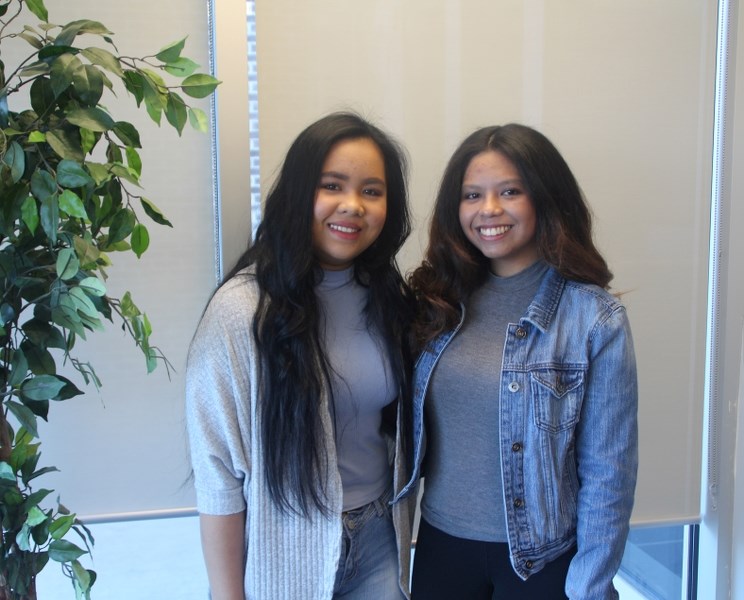Two Bonnyville students have developed a solution for the blue-green algae that covers Moose Lake summer after summer.
Sofia Karikitan and Jessica Pascual, both in Grade 10 at Notre Dame High School (NDHS), are putting their passion for the environment and science skills to good use. After much research of the sludge that appears on the local water body, they found there are certain biodegradeable chemicals containing bacterial enzymes that will slow the growth of the algae.
The duo entered their project in this year's Caring for Our Watersheds contest, playing 12th out of 153. While they didn't make the top 10, the committee was impressed with their work and awarded them a $1,500 grant to see it move forward.
“When I got the email we were walking; I was reading it and thinking ‘what do you mean we didn't get in it?' When I kept reading and it said we have a second chance, they were going to give us the money anyways, I was so happy because it means we did a good job,” said Karikitan.
Pascual added, “I was really happy. Even though we didn't go to the top ten, that they're going to fund it anyways, it's really great.”
Caring for Our Watersheds is an annual opportunity for students in Grades 7 to 12 to win funding for themselves and their school. The Beaver River Watershed Alliance began offering the program in 2013, allowing students the opportunity to submit a written proposal focused on what they can do to improve the watershed.
Through Karikitan and Pascual's involvement in the NDHS environmental science club, they were brainstorming ideas when they saw a need in the community.
“We researched about the lake and found out one of the problems is the algae, and it was a really big problem,” explained Karikitan. “What we did first is we defined what algae is and what's the main problem of it in the watershed.”
Pascual continued, “We also looked into how it affects our community, such as the water quality. The blue-green algae affects the water quality by making it not drinkable, it affects the environment around it, and the recreation on Moose Lake.”
Two weeks of sleepless nights perfecting the proposal and the pair had a solution. While it won't get rid of the unbecoming algae blossoms, by putting bacterial enzymes in the lake they can decrease the rate at which it's growing.
Finding three options, they decided a bio-booster would be the easiest and most economic choice.
“It increases the diatoms of the populations and reduces the nutrients of the algae. The diatoms are the microscopic parasites that convert the nitrogen and phosphorus that create the algae,” Karikitan noted.
With the funding received through Caring for Our Watersheds, they will now be able to set up trials at the school. Using the chemical, they will develop a model that can be monitored to ensure the outcome is what they predicted.
“I think the girls did a fantastic job with their project; their ability to think critically and research the issues and problems that are here in the Lakeland and potentially come up with a solution to help us all in the area, they did a great job,” said teacher Peter Godin, who leads the environmental science club.
In addition to the $1,500 grant, Karikitan and Pascual were also invited to present their proposal during the Caring for Our Watersheds final competition on May 13 in Wetaskiwin.



